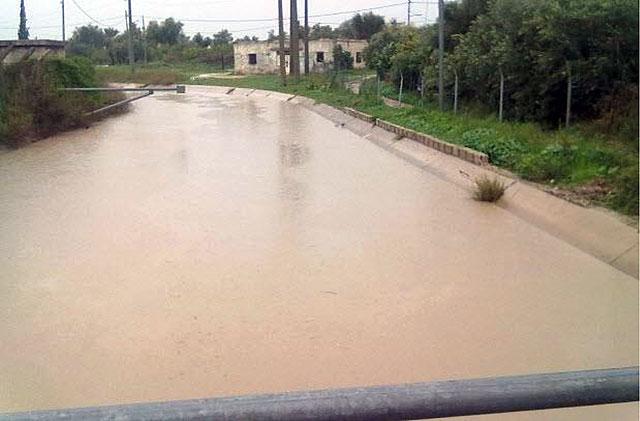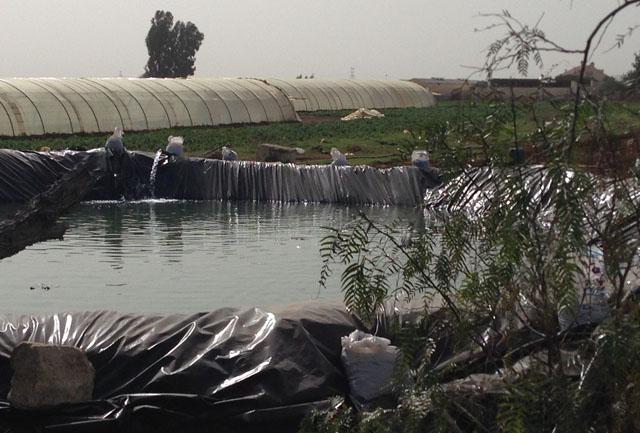You are here
‘Major deterioration’ in quality in lower part of Jordan River — report
By Hana Namrouqa - Nov 22,2017 - Last updated at Nov 22,2017

King Abdullah Canal (Photo courtesy of the National Telemetry Water Monitoring Project)
AMMAN — A new report testing and analysing the quality of Jordan’s main surface water resources detected major deterioration in the quality of the lower part of the Jordan River, urging immediate rehabilitation actions for its basin.
Salinity levels in the lower part of the river are high, which indicates that the ecosystem of the Jordan River Basin is threatened and needs rehabilitation actions, according to the report published on Wednesday.
The report is the first publication of the National Telemetry Water Monitoring Project, which is being implemented by the Higher Council for Science and Technology and the Ministry of Environment.
Under the project, funded by JICA, 13 fully automated monitoring stations were dispersed along the Jordan River, Yarmouk River, Zarqa River, King Abdullah Canal and King Talal Dam’s inlet and outlet.
The stations tested the water for pollution and abnormalities by analysing the water temperature, potential of hydrogen (pH), turbidity, dissolved oxygen and chemical oxygen demand (COD), among other parameters.
The project’s first report indicated that concentrations of phosphorus, nitrogen and COD in the 110-kilometre King Abdullah Canal increased at the canal’s meeting point with the Zarqa River, due to the nature of the river’s water, which is mostly treated wastewater discharged from Khirbet Al Samra Wastewater Treatment Plant.
However, the increase in the concentrations of phosphorus, nitrogen and COD does not impose any restrictions on the use of the water for irrigation purposes, according to the report, which noted that the water of the canal matches the Jordanian specifications on the quality of irrigation water.
The report also showed that water in the upper and central parts of the canal was of better quality compared to its southern part, where it meets with the Zarqa River.
The King Abdullah Canal, which is supplied by the Yarmouk River, irrigates 40 per cent of the crops in the Jordan Valley, and some 40 per cent of the capital’s water, after being treated at the Zai Water Treatment Plant.
Regarding the quality of water at the Yarmouk River, the report indicated that the pH was within the normal average, salinity levels were low and there were no traces of nitrogen and phosphorus, which indicates that the river water is free of biological pollutants.
Meanwhile, the report indicated that the pH in the water of the Zarqa River and King Talal Dam, which is mostly treated wastewater from Al Samra Wastewater Treatment Plant, was within the normal rates.
However, because the water in both places contain nitrogen and phosphorus, a study on how much do crops irrigated by the water of both resources benefit from the two chemicals’ concentrations is required, according to the report.
It also recommended that a comprehensive environmental study be carried out for the Zarqa, Jordan and Yarmouk rivers on the water flow of the sources of the rivers, pollutions sources, impacts and quantities, as well as the impact of the Zarqa River on underground water and measures to protect transbounadry water resources from possible contamination.
At a ceremony announcing the launch of the report, Minister of Environment Yaseen Khayyat indicated that the data and results of the project serve as a vital tool for decision makers when drafting policies.
Khayyat highlighted that the data of the project also serve in preserving the quality of water in Jordan, which suffers from water shortage and increasing demand for the precious resource.
Related Articles
AMMAN — Around 110 million cubic metres (mcm) of water have been saved since authorities launched a national crackdown on water theft in 201
AMMAN — Water flow from the King Abdullah Canal in the Jordan Valley is planned to increase this summer, the Ministry of Water and Irrigatio
Authorities dismantled 408 illegal fixtures on water mains and pipes across the Kingdom last month, a government official said on Sunday.












